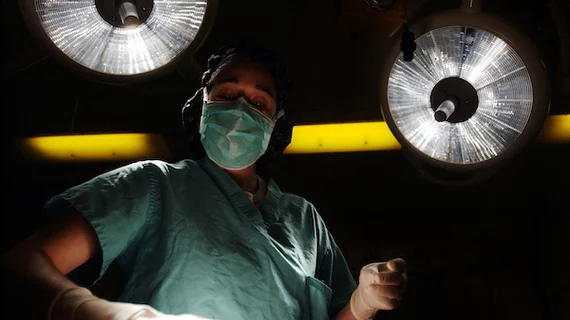Restenosis of the carotid arteries is more likely after stenting than endarterectomy and increases the likelihood of stroke, according to a subanalysis of a randomized trial published in The Lancet Neurology.
Lead author Leo H. Bonati, MD, and colleagues studied 1,530 patients who were randomized 1:1 to stenting or endarterectomy as part of the International Carotid Stenting Study (ICCS), which took place at 50 centers from May 2001 through October 2008.
The cumulative five-year risk of developing at least moderate restenosis—a stenosis of 50 percent or greater—was 40.7 percent in the stenting group and 29.6 percent in the endarterectomy group. Moderate or worse restenosis was associated with a 3.18-fold risk of ipsilateral stroke (occurring in the territory of the treated carotid artery) for the entire population, and a 5.75-fold risk of ipsilateral stroke among those who received endarterectomy. The risk of stroke after restenosis wasn’t significantly elevated among patients in the stenting group.
“Carotid restenosis increases the risk for stroke, but this risk gain might be more pronounced after endarterectomy than after stenting,” Bonati et al. wrote. “Further evidence is needed to assess the usefulness of regular follow-up of patients after carotid revascularization with duplex ultrasound and to ascertain whether repeat revascularization is beneficial in those with restenosis.”
Consistent with their findings from the original study, the researchers noted there was no difference in the rates of severe restenosis (greater than 70 percent) between the two groups. Independent predictors of restenosis included high blood pressure, high cholesterol, older age, female sex, diabetes and current or past smoking.
“Although it is intuitive that vascular risk factors increase the risk for restenosis, the reason why female sex was associated with increased risk of restenosis is uncertain,” the authors noted. “However, this association might relate to the fact that the diameter of carotid arteries is smaller in women compared with men; thus, a given width of intimal hyperplasia might lead to a greater degree of stenosis in women than in men.”
Bonati and colleagues acknowledged they may have underestimated the degree of restenosis because those measures were only assessed periodically by ultrasound. By the time stroke occurred, they pointed out, stenosis may have been more severe than previously measured.
In a related editorial, Seemant Chaturvedi, MD, said the practical implications of the analysis are unclear.
“Intensified medical treatment seems reasonable, but its efficacy has not been proven in clinical trials of patients with a previous stroke,” wrote Chaturvedi, a professor of clinical neurology at the University of Miami. “Endarterectomy or stenting procedures for asymptomatic stenosis in the general population are of uncertain value, so undertaking another procedure for asymptomatic restenosis is even less persuasive because the risk for complications from operating on a restenotic lesion is high so the risk:benefit ratio is less favorable.”
However, Chaturvedi noted the predictors of restenosis highlighted by Bonati et al. could identify patients at increased stroke risk who would benefit most from routine follow-up imaging. This surveillance may provide prognostic value, even if the best treatments for these individuals are still undefined.

